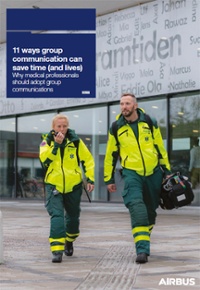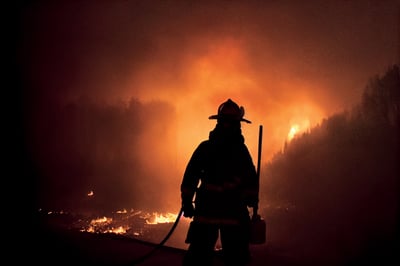If caring for desperately sick or injured people is not mission critical, then I don’t know what is. Nothing is more important than saving lives. When every second counts, healthcare professionals need quick, reliable communications. And there are 5 great reasons that medical teams should adopt group communications.
Medical professionals understand the concept of mission critical. They often encounter life or death scenarios and have to make instant decisions. An extra second could be the difference between life and death.
Communications can make that difference. Quick and efficient communications can help them and let them concentrate on the patient and the situation at hand. Not just any communications, but communications designed for professional teams.
There are 5 great reasons for healthcare professionals and medical teams to adopt group communications:
- Teams can communicate as groups
- Team members can discuss one on one, too
- People have a quick way to call for help
- All team members can get alerted at the same time
- Teams have a quick way to share their status.
I’ll also list the five key functions that a group communication solution has to deliver. If it does not, it will not meet the needs of healthcare professionals.
1. Teams can communicate as groups
Key communication function: Talk groups
In a talk group, when one person speaks, all the group’s members hear what she/he is saying. For example, all nurses on a night shift could be one talk group. They could quickly ask the others for backup.
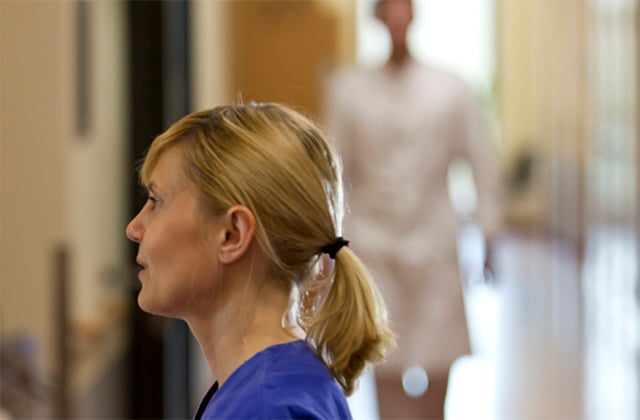
Think about a nurse in the middle of the night, alone with a patient who needs to be turned. Helping hands are needed if the nurse cannot manage this alone. Calling around the hospital trying to find someone to help would take time.
With talk groups and a group communication app or smartphone, the nurse just presses the push-to-talk (PTT) button and talks. All nurses on a night shift will hear the call for support.
Likewise, the nurse that is available to go and help only needs to speak to the same talk group, and everyone will hear. Simple, fast, and efficient.
Another example: have the radiology and ER teams in one talk group together. They can communicate at a push of a button, and patient care will benefit.
When the talk groups are set up in a controlled way in everyone’s device, only the right people will hear the communications.
Handpicked related content
Download eBook: 11 ways group communication can save time (and lives). Medical professionals know that an extra second can be the difference between life and death. Communicating in a group instead of one-to-one can really save time. Download this guide now and learn how!
2. Team members can discuss one on one, too
Key communication function: Individual (or one-to-one) call
Teams need their group communication, and at times, they also need to be able to discuss things one on one. That is why the group communication solution also needs to deliver a one-to-one call function. A one-to-one call is convenient when the issue only concerns one person. It’s a good way to ask for a consultation or second opinion, for example. It is also handy for reserving a resource when things are not urgent.
It is even better if there is a so-called direct call because that is the quickest way to tell one person something. Just find the person in your list of contacts, press the PTT button, and speak.
When you speak, the person will hear you right away – they don’t have to “pick up the phone”.
Here’s a good example: an ambulance on the way to the hospital. The patient gets an unexpected complication and the paramedic needs to consult a doctor.
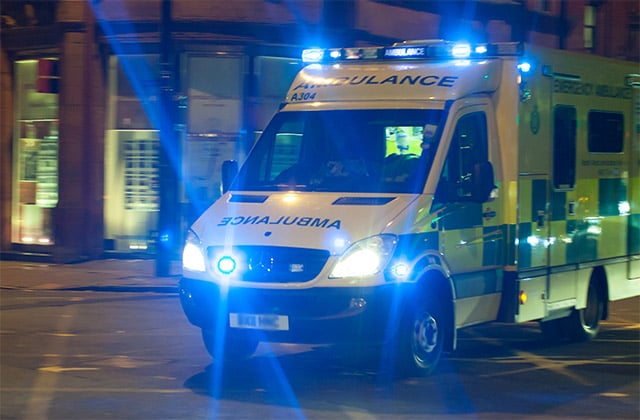
The paramedic takes her device, finds the doctor’s contact information and presses the PTT button. She will be able to speak to the consulting doctor right away. With the right group communication solution, the call will also be secure and confidential.
Consultations are faster and efficient, and possible even while on the move.
3. People have a quick way to call for help
Key communication function: Emergency call
Group communications on a professional app or on a radio must have a special red button or key for making an emergency call. That call will have the highest priority, and everyone will know to take it seriously.
The emergency button/key usually starts a call to the pre-defined emergency talk group.
Here’s an example: a nurse is wheeling a patient in the underground corridor between two hospital buildings. Suddenly the patient starts seizing. A long press of the emergency button sets up the call to the emergency team immediately. Because the microphone is open, the nurse can explain the situation right away. He will know that help is on the way.
Hospitals may also want to route emergency calls to hospital security. The security staff know the buildings and the area and will get there quickly to defuse other dangerous situations.
4. All team members will be alerted at the same time
Key communication function: Alerting
Efficient alerting of certain teams will save considerable time. For example, it would be good practice to set up a shared talk group for three important teams: trauma, cardiac, and resuscitation. Everyone will get the alert at once.
The teams can start preparing as soon as they get the alarm. Any updates to the situation will also reach everyone at once, and they all get an excellent picture of how the situation may be changing.
As an example, one trauma team may consist of 20 professionals: the emergency doctor on duty, the lab, x-ray, anesthesiologists, operating theatre and blood bank, for example. Think how long it would take to call them one by one!
In contrast, an alert from the ambulance will immediately inform the whole group on an incoming patient. They all have exactly the same information and they can prepare everything to be ready when the patient arrives.
Sadly, many hospitals still alert the trauma team and the support functions one person at a time. This can take 20 minutes or even longer, which is far too long when every second counts.
5. Teams have a quick way to share their status
Key communication function: Status sharing
Do you need to assign a task to someone? Do you need someone’s help with a task that is not urgent? Then, it will be helpful to know who is available and who isn’t.
Wouldn’t it be good to know more than who is currently at work? If you could see who is working on another task right now?
Status sharing shows you exactly who is on duty, who is available, who is busy with another task, or taking care of a patient.
Status sharing combined with location tracking gives dispatchers an excellent overview of the current situation. And when there is an easy way to get an overview of everyone’s status, it is easier to distribute the workload evenly.
Choose a communication solution that lets you customize statuses, and you can use them to support your ways of working. Your teams could use status sharing to improve personnel safety in the following way, for example:
A nurse makes a home visit to a patient who is known to be unstable. The nurse can set the “visiting patient” status to a certain category which tells the manager and dispatcher that it should be tracked. If the status has not changed in the time allotted for a home visit, extra follow-up could be triggered.
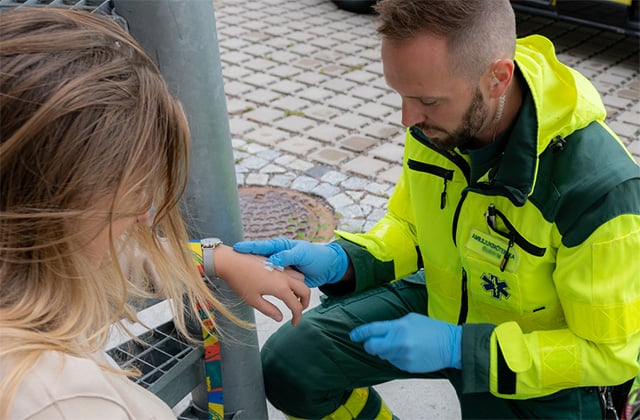
How to adopt group communications
How to recognize a group communication solution designed for healthcare professionals?
If you are considering a solution, be sure to check it against the list of five key features. You should also take a look at my recommendations:
Tactilon Agnet – more than a PTT app
Your organization is bound to have smartphones in some professional use. This means that you have a preferred, reliable mobile network, and your teams can adopt a professional PTT app such as Tactilon Agnet. It is in fact much more than an app: it is a professional, complete, cloud-based solution for instant information sharing. You’ll only need the mobile subscriptions, and Tactilon Agnet will work on your existing smartphones.
Tactilon Agnet can deliver another important benefit.
When a situation requires for a new team to be connected, Tactilon Agnet works flexibly. For example, it’s easy to add the team at a new vaccination station. The dispatcher adds the team members into the system, defines their talk groups, and the team members download the app into their smartphones. It’s that simple!
And the new team can communicate instantly – also with the other necessary teams.
TETRA radios
You can also adopt TETRA radio communications. Your organization or hospital may be able to join a public safety TETRA network. This way, you could gain extra benefits from using the same network as rescue organizations or the police.
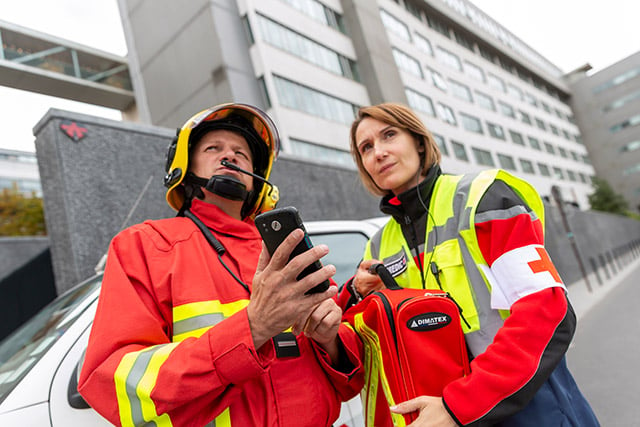
If you cannot join a shared network, you can build a local TETRA network to cover your operational area. TETRA solutions from Airbus will deliver secure group communication to medical teams.
You can even complement TETRA with Tactilon Agnet and introduce smartphones into the same secure groups. This way, the teams’ operational area will extend beyond the covered by the TETRA network.
Group communications can save time – and lives
Successful medical and healthcare teams work together like a well-oiled machine.
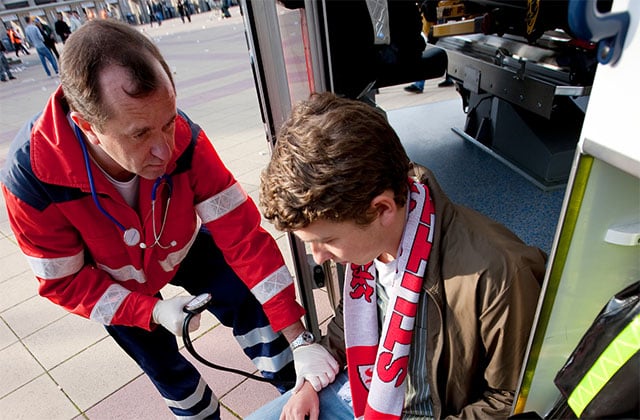
The best teams bring together their knowledge. When they can concentrate their skills to the patients’ benefit, they can achieve great things.
The result? Better care with optimal resources.
Here are some of the ways group communications can help medical professionals:
- Faster patient care with fewer delays. This can save lives.
- Less time spent calling people one by one
- Less time spent trying to find a person
- In a group, everyone gets the same, accurate picture of the situation
- Everyone can be informed of a critical fact at once, for example, if there is a glitch in the IT systems.
- Better patient and personnel safety - a nurse can make an emergency, highest priority call
- No wrong numbers - the group calls reach the right people.
You will find more detailed examples from this guide. Download it to learn 11 real-life situations where group communication can save considerable time for medical professionals – and where group communication could also save a life.

